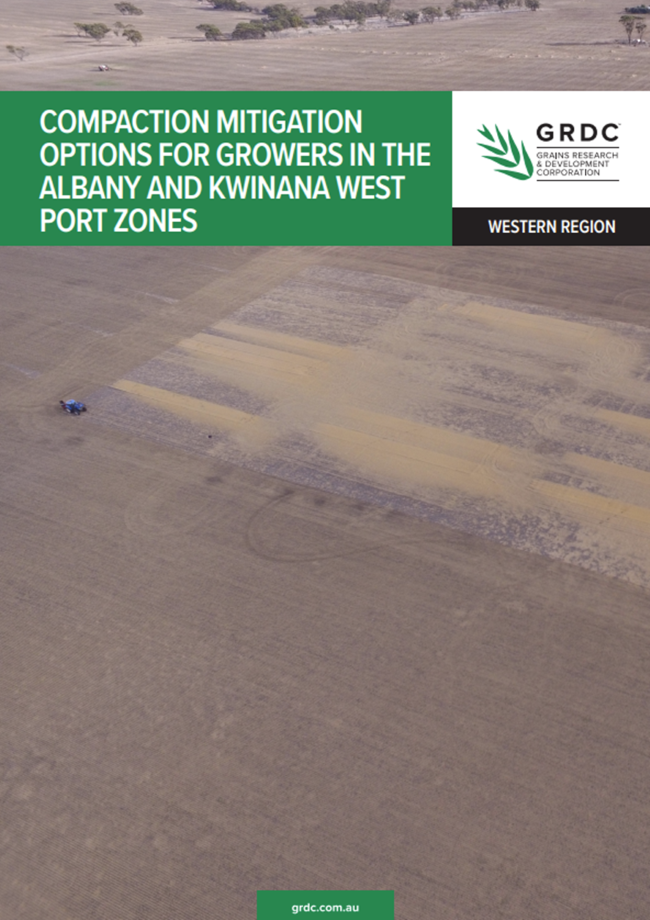Compaction mitigation options for growers in the Albany and Kwinana west port zones
Published: 24 Jan 2022
The majority of agricultural soils in Australia have developed subsoil physical constraints, in particular compaction. An estimated 13 million hectares (70 per cent) of Western Australia’s agricultural soils have moderate to high susceptibility to subsurface compaction (Department of Agriculture and Food Western Australia, 2006).
Subsurface compaction is caused by compression from agricultural machinery traffic with the compacted layer forming between 10 and 40 centimetres. In contrast, compaction from stock trampling is confined to the surface 15cm of soil. In addition to compaction, hard layers can form as a result of natural soil packing and chemical cementation processes, and these can occur throughout the soil profile. These hard layers slow or, in extreme cases, prevent root growth and restrict root access to water and nutrients (www.soilquality.org.au).
Soil compaction is widespread, but the exact severity and trend is unknown. The annual cost of compaction as lost production is estimated at $333 million, with additional losses associated with soil structure decline. Subsoil compaction holds back crop growth on WA soils by restricting root growth and increasing the risk of waterlogging in the soil profile. Compacted soils can also restrict healthy activity of soil biology. These effects can reduce grain yield and increase costs.
Optimum compaction management strategies include traffic control and deep ripping. Previous RD&E, with investment from GRDC, WA Department of Primary Industries and Regional Development (DPIRD) and Northern Agricultural Catchment Council (NACC), have reported yield benefits of about 10 per cent ($60 per hectare benefit for a 2 tonne/ha yield and $300/t price). They also report better quality from a controlled-traffic farming (CTF) system on deep sand with suitable amelioration of compaction, and 20 to 30 per cent grain yield increase by deep ripping without a hard finish to the season.
Download PDF
Region: West
GRDC Project Code: AVP1702-001WCX,
Was this page helpful?
YOUR FEEDBACK

